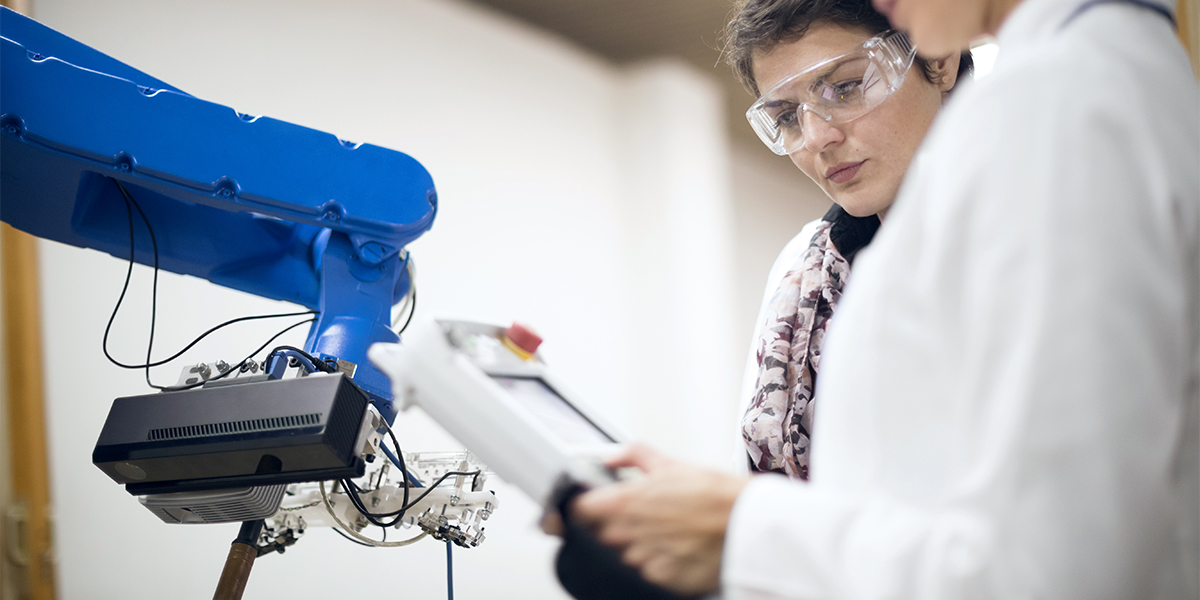Invest in Canada: Leading global business innovation with the Digital Technology Supercluster
Canada is aiming to become a global player in developing new innovations and technologies. The Digital Technology Supercluster, a collaboration-focused consortium of emerging companies, think tanks and academic institutions, will be key to that transformation.
They say there’s strength in numbers. As such, larger businesses often survive longer than SMEs. On average, larger businesses are also more productive and contribute more to overall GDP, regional employment and social needs.
With this in mind, it makes sense for organizations in the same industries – especially in high tech and data development – to collaborate on a national level, rather than competing with each other. This can contribute to a more innovative and resilient tech sector, and a stronger economy.
Canadian Innovation and the Supercluster
The Global Innovation Index ranks nations by their capacity to successfully innovate. This can be in relation to technologies, business processes or social initiatives. The 2020 Index placed Canada at 17 out of 131 economies across the world, and at 16 among 49 high-income countries.
One of the main aims for the Canadian government is to improve this ranking, with a particular focus on innovation output. That’s where the Digital Technology Supercluster comes in.
Superclusters are collaborative areas of enterprise activity dedicated to boosting innovation and growth in a particular industry. They bring together a mix of conglomerates, emerging companies, startup accelerators and incubators, not-for-profits, and academic institutions.
But how will the Digital Technology Supercluster power Canada’s innovation?
We sat down with Bill Tam, co-founder and chief operating officer of Digital Technology Supercluster, to get a better understanding of how increased collaboration in the business community and beyond will help Canada grow.

Bill, What is the Digital Technology Supercluster?
The Digital Technology Supercluster is one of five Canadian superclusters formed as part of a government policy to position Canada as a global leader in innovation. It unites leading organizations to develop solutions to the most significant issues facing the tech industry.
Through its collaborative model, the Digital Technology Supercluster focuses investment on digital R&D initiatives within traditional industries such as resources and health, rather than on individual organizations, to ensure whole sectors can develop and grow together.
Collaboration is the core of what we are about. As John Stackhouse, senior vice president of RBC and author of Planet Canada puts it, “collaboration is the most overused and under-appreciated skill in business. Too many people confuse it with cooperation… It is not. Collaboration is about charting new courses with others – and using collective intelligence to build something better.”
The risk-taking and funding needed to fulfil Canada’s goals cannot be done by the private sector alone. In leveraging government investment in technology, the Digital Technology Supercluster is maximizing public-sector investment to drive Canada’s innovation economy forward.
Why is Government Investment Vital For Canada To Become An Innovation Leader?
Government investment is critical in de-risking early stage investments in emerging technologies. Funding from the government allows the Digital Technology Supercluster to co-invest in R&D projects, which makes potential products and services a reality. This lowers the risk for other participants to collaborate, and allows these participants to each offer unique expertise in developing the project that no single organization could achieve on its own.
Government investment is also highly effective in stimulating innovation across the country.

How Does Digital Technology Supercluster Investment Work?
The Digital Technology Supercluster’s unique consortium model brings together businesses and organizations of all scales to curate, co-invest, develop and deploy Canadian-made digital technologies. Project proposals submitted for funding are evaluated on a competitive basis by an independent project selection committee to ensure there is no conflict of interest.
To date, we have selected more than 70 projects, based all over Canada and backed with co-investments of more than CA$130 million.
How Does The Digital Technology Supercluster Help The Canadian Economy?
The Canadian business mindset is geared towards collaboration and diversity. Our role in the Digital Technology Supercluster is to leverage this natural propensity to work together by bringing together expertise from the top minds in the tech industry and helping them tackle significant industry and societal challenges too daunting for a single organization alone.
We also support Canada’s goal of scaling up more businesses to contribute to faster growth for the economy. By connecting startups and SMEs to large companies, we are building stronger domestic innovation supply chains. If done properly, this will enable startups to secure local customers and partners, then innovate and escalate growth rapidly into new markets.
Finally, we hope to support Canada’s national goal to create an R&D model that will distinguish the Canadian economy on the global stage and underwrite future economic success.
How Is The Supercluster Influencing The Attractiveness Of Investing In Canada?
Canada has strengths that make it an attractive prospect for global investors in every industry. These positives include:
- R&D: Canada has a historically strong scientific and research community that punches above its weight in terms of the number of journals and publications released each year. Canada also offers a number of R&D programs that incentivize investors, including the Strategic Innovation Fund and the Scientific Research and Experimental Development tax credit for R&D activities conducted in Canada.
- Talent: Canada has one of the most educated workforces in the world, with nearly 58 percent of Canadians aged 25-64 having graduated from post-secondary institutions. The national immigration policies also favour highly skilled talent from around the globe.
- Entrepreneur ecosystems: Canada has a vibrant entrepreneurial ecosystem. We have seen a real uptake in recent years of small innovators contributing to fields seen as key drivers in the new tech economy. We’ve also seen these same small businesses avail of mentorship and collaboration opportunities with larger companies to learn and grow.
Our supercluster leverages these strengths to connect organizations across Canada, and to generate bold ideas, drive economic growth, attract top talent and advance innovation.
Finally, How Will Canada Be Positioned On The Global Innovation Landscape In Coming Years?
Canada has two core assets that give us confidence in becoming one of the world leaders in the global digital economy.
First, we have the right collaborations between different industries focused on digital enablement. This is crucial, because success in the digital economy requires technologies that have a cross-sectoral impact. Canada lends itself to sharing practices and opportunities.
Secondly, it’s about how we view ourselves as Canadians. The underlying element of success in using new technology is having a strong set of societal values and a regulatory framework that understands the elements of trust. We need to use digital data in a responsible manner, and people can view Canada as a safe haven for responsible values and practices in data analytics.
We can position Canada as the Switzerland of data in the next few years. I believe that’s an opportunity we need to take.
To learn more about the Digital Technology Supercluster or to discuss your project, contact us.
This blog was written in partnership with the Digital Technology Supercluster and originally appeared on the Collision Conference 2021 blog.